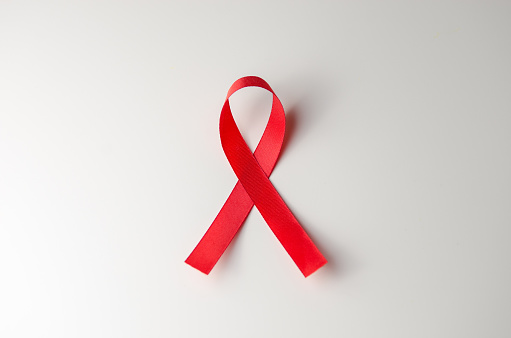HIV Awareness Month

Red ribbon HIV, AIDS on gray background, Awareness, Medical sign. copy space.
December 2, 2019
Most people tend to associate the month of December with the holidays. Christmas being the thing that’s at the forefront of most people’s minds. But, for approximately 1.1 million people in the U.S. it has a different meaning. December in HIV/AIDS awareness month, with the first of December being World AIDS Day.
People living with HIV typically don’t notice symptoms until two to four weeks after being exposed to it. After this stage it progresses into ‘chronic HIV’, with symptoms that range from severe to not even being noticed. People may experience difficulty breathing, weight loss, diarrhea, or persistent fevers. Some may not exhibit any symptoms at all. This period in HIV’s progression can last up to a decade before progressing into AIDS. People who are diagnosed with AIDS usually only live three years after the diagnosis.
Currently, there is no cure for HIV/AIDS, though work is being done in that field. However, there are treatments out there that can slow the progression of HIV. The World Health Organization recommends that anyone suffering from HIV or AIDS seek treatment and adhere to it. While there may be no cure, there are steps that you can take to limit your risk of contracting HIV. Such as practicing safe sex, not sharing needles, and not coming in contact with blood that contains the virus.
In recent news, the government is starting to provide HIV prevention drugs to uninsured Americans. This program covers one-hundred percent of the cost of the drugs being provided, while it does not cover the expenses of clinic visits and lab test. This is a great step forward in lowering the number of HIV related deaths and preventing people from even developing it in the first place.
The next best thing that can be done, short of finding a cure, is educating people about the risks of HIV and AIDS. Luckily, that process has already begun.

